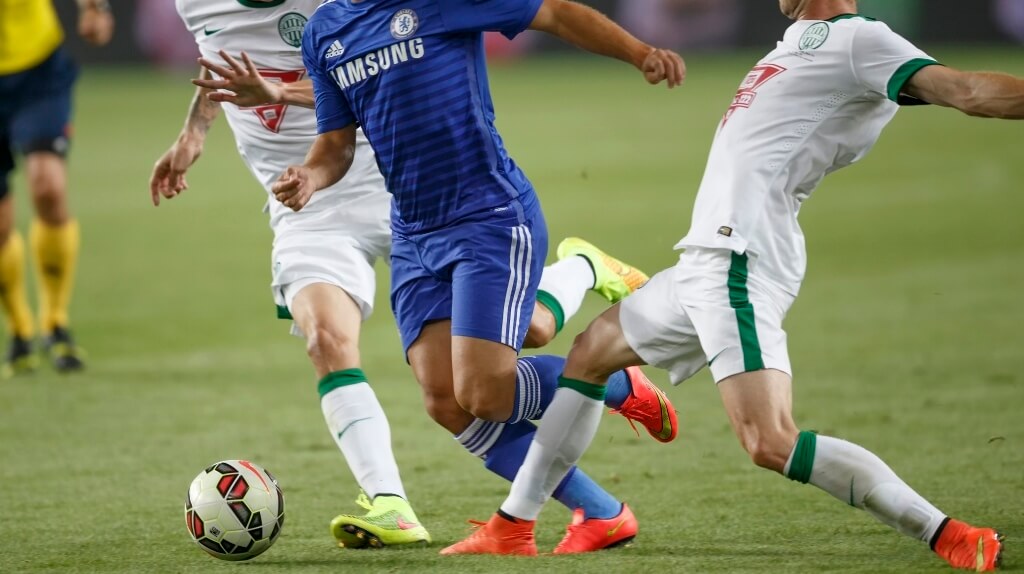
The menisci can be found between the thigh bone, also known as the femur, and the lower leg bone, also known as the tibia.
Its main purpose is to ensure that the lower part of our legs is protected from the shock brought about by our body weight. In other words, it acts as a shock absorber.
There are two types of menisci. The lateral meniscus and the medial meniscus. While the lateral meniscus is found on the outside of the knee, the medial meniscus is found on the inside. They both play an important role in supporting the weight of our bodies.
Due to the physical activities that athletes involve themselves in, meniscus tears are very common among them (the athletes). A tear happens when athletes turn or twist their upper legs with a bent knee and a planted foot.
This is a serious injury that has proved to be a big issue for athletes since it can keep them out of their favorite sports until their recovery.
Treatment Options for Meniscus Tears
There are different options available for athletes to choose from in case of a meniscus tear. Depending on the type of tear and how serious it is, doctors can advise on the right form of treatment. For instance, those who have suffered from a horizontal tear lateral meniscus can use circumferential stitches to repair the injured meniscus.
Other common treatment options include arthroscopic surgery, exercises to strengthen the muscles, medication such as the use of ibuprofen, and icing. However, the treatment that is recommended on an athlete with a meniscus tear depends on several things such as;
- The medical history and overall health.
- How their bodies can tolerate different therapies, procedures, and medications.
- The level of their injuries.
- The time they are likely going to take during recovery.
- The form of treatment that the affected athlete prefers.
Why Meniscus Injuries Pose a Threat to Athletes
A meniscus tear can be a big issue for athletes and might pose a threat to their careers. Even though the tear might bring different issues to different athletes, most athletes go through the following when they have injuries to their meniscus;
- They cannot bend the affected know or fully extend it.
- Locking or catching of their knee joints.
- Swelling.
- Pain on the knee joint depends on the type of meniscus tear. If the medial meniscus is injured, the pain will be on the inside. It will be on the outside for injuries to the lateral meniscus.
- Limping due to the pain caused by the tear.
As such, an athlete will not be able to meet his or her obligations due to injuries to their meniscus. A serious meniscus tear might leave one with no option but to go through surgery, something that might mean that they are not involved in their sports for some time.
However, whenever athletes are facing some of the challenges discussed above, they should not assume right away that they have torn their meniscus. It is important for them to see a health professional for diagnosis and to determine the form of treatment that best suits them.
Diagnosing Meniscus Tears
When an athlete suspects that they have torn their meniscus, they are supposed to visit an orthopedist for a checkup. The orthopedist will then evaluate the injury on the knee and check their health history to see if the athlete has prior issues with their meniscus.
Depending on the symptoms that the athlete is showing, the orthopedist may order for MRI (Magnetic Resonance Imaging) or X-Rays to confirm whether the athlete has torn their meniscus or not.
After the diagnosis, the orthopedist will then present the athlete with the best treatment options available depending on the factors discussed above. After treatment, the athlete will have to sit out any sporting or physical exercises and focus on rest, sleep, energy, and their well-being until they have recovered.
Conclusion
Meniscus injuries and the form of treatment that one chooses might have long-term effects on athletes. For instance, some people have suffered from arthritis at later stages of their lives after undergoing surgery to repair torn meniscus earlier in their lives.
It, therefore, means that athletes need to be careful when choosing the form of treatment for a torn meniscus.
Meniscus injuries are not a reserve for athletes or people who engage in physical exercises. Older people are also prone to meniscus injuries. As a person grows old, their muscles and bones wear out, meaning that their menisci cannot hold their weights as effectively as before. This exposed them to a torn meniscus.
Thanks for signing up to Minutehack alerts.
Brilliant editorials heading your way soon.
Okay, Thanks!